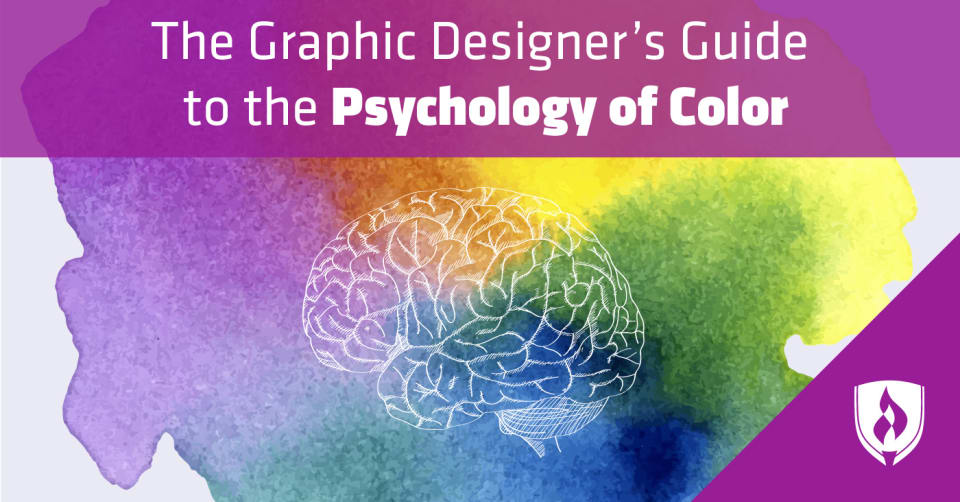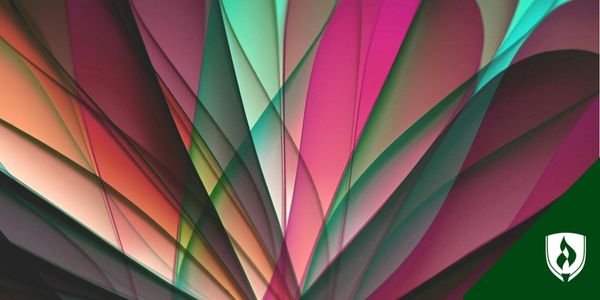
Do you respond differently to a logo that is yellow instead of blue? Your first thought might be that it doesn’t matter, but the colors used in a design can actually have an impact on its viewers. Using color in graphic design is an excellent way to subtlety influence the way a viewer feels about a composition. For example, bright green colors tend to evoke springtime and nature, which would make perfect sense for a renewable energy company’s logo.
All companies and brands utilize color on their websites, in their advertisements and on their products, so it bodes well to choose colors that resonate with the mission of the business. Just like the perfect shade of paint can breathe life into a room, the right color can trigger the desired action from a consumer.
But don’t just take our word for it. We connected with seasoned professionals who fully understand the impact of color in design and business. Read on to glean wisdom from these experts on the psychology of color and design.
What is color psychology?
Color psychology is the study of how color affects our emotions and behaviors. Depending on your upbringing, cultural background and personal preference, certain colors can make you feel a certain way.
Why does the psychology of color selection matter?
Have you ever noticed how a yellow room tends to make you feel brighter or happier? Or how a red dress can make you feel a sense of passion, while a red sign can alert you to danger?
The topic of color psychology can be a bit complicated because color and feelings can be highly subjective. But studies suggest that color does influence emotion in specific ways.
“As a company that manufactures baby products, we want our brand to invoke a feeling of comfort and reliability. We believe that color selection plays a large part in generating these emotions,” says Tali Zipper, vice president of marketing for Baby K’tan LLC. She explains their strategy of choosing cheerful colors that would also signify reliability, encouraging customers to feel at ease when purchasing their products.
Zipper goes on to explain that the company found studies that suggested blue is often connected with credibility and calmness. They decided to alter their blue to a more vibrant hue so customers would also associate their brand with joy.
It’s also important to recognize that different colors can evoke different emotions depending on the culture, according to Lauren Ellis, creative director at Masonry. For example, red in Western cultures usually means danger, passion or anger, while it signifies luck or joy in Eastern cultures. Blue is viewed as masculine in the U.S. but feminine in China.
Color selection can make a big impact on the reaction of your audience and how they feel about your product. It can provoke hunger, inspire trust or elicit a feeling of calm or excitement. This is why every color should be selected strategically to contribute to the overall goals of the piece.
What does each color represent?
Looking to for a guide to color and the emotions commonly tied to each? Familiarize yourself with the common connotations each color carries.
What does red signify?
The color red is often associated with evoking strong or passionate emotions. Love, comfort, confidence, warmth, excitement and passion are some of the more positive emotions connected to this color. Anger and danger are some of the negative feelings induced by the color red.
What does pink signify?
Pink is associated with romance and love, as is clearly seen on most affectionately themed chocolates and cards doled out around Valentine’s Day. Pink is also thought to evoke a certain sense of calm in viewers. Culturally, many categorize pink as a feminine color and therefore think of kindness, softness and compassion.
What does orange signify?
Orange is typically correlated with excitement, enthusiasm and warmth. It’s an energetic color that tends to draw attention, which is why it’s often used on traffic signs. Citrus fruits and the refreshing sensation of beauty are also commonly linked with the color orange.
What does yellow signify?
Yellows are generally cheerful and warm colors, but have also been found to induce feelings of frustration and anger. Yellow is the most eye-catching of colors, so it’s often used to draw attention on traffic signs or capture the viewer’s eye in an advertisement.
What does green signify?
Green carries many connotations and connections. While generally associated with nature, it also is connected with soothing, calming and health-giving feelings. Green can also be associated with money, jealousy, good luck and fertility.
What does blue signify?
Blue is viewed as a calming and serene color. It’s often considered stable and non-threatening and can promote a tranquil, peaceful emotion. Blue is also connected with feelings of icy distance and sadness.
What does purple signify?
Purple is often described as mysterious, imaginative and spiritual. It’s also generally associated with wealth and royalty, as many famous kings wore purple-colored clothing.
What does white signify?
Culturally, white has long been associated with cleanliness, innocence and purity. This is why the bride classically wears a white wedding dress. On the flip side, it can also be viewed as cold, sterile or bland, so it’s important to use white appropriately.
What does black signify?
The color black is often connected with death, mourning or evil. It’s a dominant color on Halloween and is often the clothing color of many a nemesis in fairy tales and movies. Black is also used often in fashion, as it easily creates a slimming effect.
Consider your colors wisely
Graphic design is more than just choosing a few colors that look pleasant together. Understanding the psychology of color and knowing how to use it strategically is one of the basic fundamentals of graphic design.
Color theory is just one of core competencies covered in a formal graphic design curriculum. Learn about other critical concepts you should consider in our article, “7 Things Self-Taught Designers Don’t Know They’re Missing.” Additionally, explore what makes a good logo.
EDITOR'S NOTE: This article was originally published in 2016. It has since been updated to include information relevant to 2018.
Related Articles:




